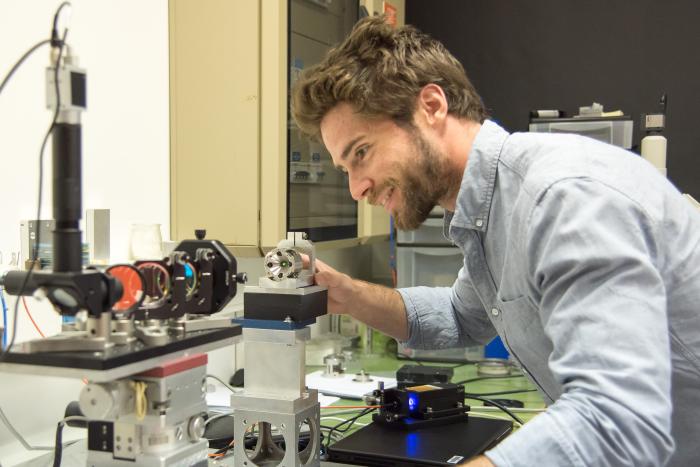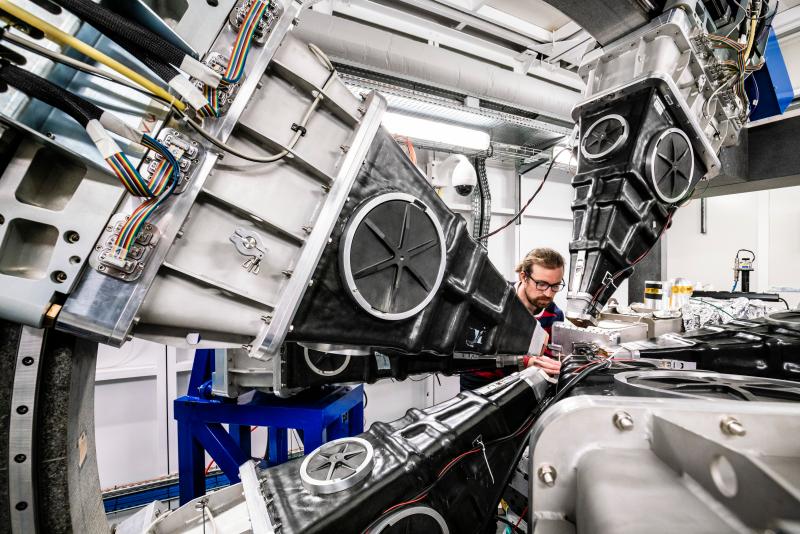- Home
- News
- General News
- A stable form of...
A stable form of carbon may explain carbon abundance at the core-mantle boundary
17-03-2023
Scientists have discovered how carbonates in amorphous materials, such as viscous silicate melts, become stable at the extreme depths of the Earth's lower mantle. The results, fruit of experiments on three different ESRF beamlines, can shed light on naturally occurring phenomena like hotspot volcanism. Their research is published today in the journal Communications Earth and Environment from the Nature Publishing group.
Carbon plays a vital role in our planet as it forms the basis of many of our energy sources and it is crucial for life, but an excess of it in the atmosphere poses a significant challenge. The amount of carbon present in the surface of our planet is only about 10% of the total carbon on Earth. The remaining 90% of the Earth’s carbon is suspected to be trapped in its core and lower mantle. Subduction processes lead to a certain degree of carbon mobility inside the Earth, however, most of the subsurface carbon has been trapped inside the Earth since its formation, and it is known as primordial carbon.
Hotspots are surface areas with intense volcanic activity caused by rising plumes of hot lower-mantle material that exhibits increased concentrations of carbon emissions. This implies that their source at the bottom of the plumes is enriched in carbon with respect to other regions of the Earth’s interior. Examples include Iceland, Hawaii and Yellowstone National Park. The scientific community has always been intrigued by this: where does this huge amount of carbon come from?
 |
 |
|
Valerio Cerantola during the experiment (left) and Christoph Sahle (right) on ID20. Credits: C. Argoud and S. Candé. |
|
Scientists, led by the University of Milano-Bicocca, have delved into the existence of carbonates at the bottom of the lower mantle. Back in 2017, they studied iron carbonates, a crystalline material present deep inside the Earth, and found that it changes into a tetracarbonate form when pressures and temperatures similar to those prevailing in the lowermost lower mantle are applied. This carbonate form is very stable.
“The current research is a follow-up of that study: we have now focused on amorphous materials, which we think are probably very present at that depth, in the form of molten materials”, says Valerio Cerantola, scientist at the ESRF at the time of the experiment and now assistant professor at the University of Milano-Bicocca.
“The challenge of studying disordered materials like glasses or liquid is obvious as they don’t diffract nor scatter well in X-ray experiments”, he explains. However, the ESRF provided the solution for Cerantola and the team: “On beamline ID20 we could follow the changes in the local structure around the oxygen atoms in the carbonate groups, up to the pressure of the core-mantle boundary, as they were happening. We literally observed how the material broke the double bond of the carbonate molecule to create an extra bond between carbon and oxygen, thus tetracarbonate units, and all that in situ”. He adds: “There was no previous experimental data on this, only a few computer models”, he says.
Subsequently, they repeated the experiments using X-ray diffraction on ID15A and ID15B, looking into the distances between the atoms, which provided them with additional information on where and how the structure was changing.
The results were clear: carbonates groups in amorphous materials form tetracarbonates, which due to their ability to polymerize, just like silicates, reach mechanical stability at the extreme pressures of the Earth’s lower mantle and are not expected to really move very easily from there. “This supports the idea that at the bottom of the lower mantle there are huge reservoirs of carbon, from primordial and subduction origin, which are capable to form stable and highly polymerizing tetracarbonates in amorphous or crystalline material”, explains Cerantola.
The next step for the group is to study real melts at extreme pressures and temperature and looking at the interactions between carbonate and silicate, which would represent better the chemistry of natural systems.
Reference :
Text by Montserrat Capellas Espuny
Top image: One of the hotspots of the planet is in Iceland. In the picture, the volcano Fagradalsfjall in eruption.



